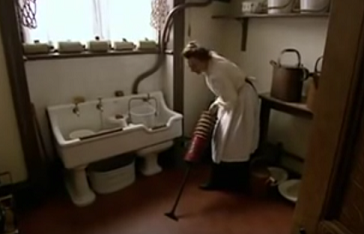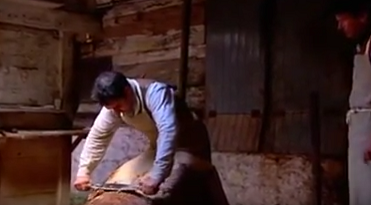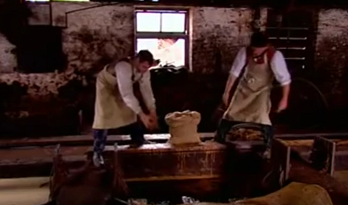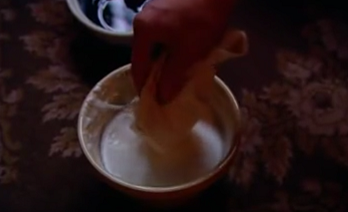Learning from the Past - Living Off-Grid - Edwardian Farm (Episode 4)
If you missed episodes 1, 2, and 3, you can find the write-ups here, here, and here.
We are now onto episode 4 of The Edwardian Farm put out by the BBC. This wonderful documentary takes us back to a simpler age without all the conveniences that we know. A simpler time, but not an easier time! Some of the things you will learn in this series of videos will open your eyes to the amount of work these people had to do. Yet, I think that through all their hard work, they found a sense of completeness and happiness. Anyway, on to the episode!
Introduction to Episode 4
You can view the episode here.
Ruth, Alex, and Peter continue their year in Devon living as the typical Edwardians. They have made quick lime and slaked lime, restored the old farm, raised trout from eggs, and many other things. It is now December, and winter brings many changes to the historical farm and the trio's life there. In this episode, the three get daytime jobs off of the farm in order to make a bit of extra cash.
Lesson 1: How to Make a Trap for Catching Lobster

The boys are trying their hands at catching lobster out on the water. In order to do this, they need to make what is known as a lobster pot. This is a a trap that allows the lobsters to enter the basket while preventing them from leaving it. In the Edwardian age, they wove these lobster pots from willow. This part of the episode is really worth a watch! Find it starting about the 6:30 mark.
Interesting Fact

The bike became widely available during the early part of the 20th century. This really expanded the world for many people. People were able to get day jobs further away from the farm than they could previously. In this episode, Ruth uses the bike to travel to her day job for the episode: being a housekeeper for a wealthy family.
Another Interesting Tidbit

The domestic servants were completely segregated by sex. The men and women servants occupied completely different parts of the house. Interestingly, they even had different staircases: the men's was made of stone, and the women's was made of wood.
More Interesting Facts? Yes!

The vacuum cleaner just started coming on the scene during the Edwardian period. However, these vacuum cleaners were manual vacuum cleaners. You actually had to pump them by hand in order to get them to suck. With that much effort, I wonder if it was really that much more convenient than before!
Lesson 2: Making a Polish for Wooden Furniture

Before the era of modern chemicals, people used all sorts of natural items to make their cleaners, polishes, and cosmetics. To make this polish, Ruth uses linseed oil, just a bit of gin, and black treacle (molasses). The molasses was used to give it a bit of color, and the gin was to help make it easier to go on.
Lesson 3: Making a Wood Cleaner

If you just want to clean your wooden furniture (or walls, in this case) instead of making them shine with a polish, Ruth has another simple cleaner. It was common to use plain, warm beer. The beer has a slight acidity which helped to clean the surface. Just be sure to air out the room once you are finished!
Strange, Yet True, Fact

Many Edwardian farmers who raised beef cattle did not consume their own meat when it was butchered. It was too valuable. Most chose to sell it in the city and make a bit of money rather than eat it themselves.
Lesson 4: Removing Hair from a Hide

The way they removed the hair is by first soaking the hide in a solution of lime water for a good length of time (they said a fortnight). Then, the hair was easily removed by scraping it.
Lesson 5: Tanning a Hide

After the hair is removed from a hide, it needs to be tanned in order to turn it into leather. This process takes a LONG time. In the specific tannery that is shown in this episode, the hide is first soaked in a week oak bark solution and then transferred to a stronger solution. The whole soaking process takes 12 months. The oak bark contains tannin, which when mixed with water makes tannic acid. This is what actually does the tanning (hence the name).
Lesson 6: Making a Leather Polish

Ruth adds yet another house cleaning product to our list for today. This time it is a simple leather polish for furniture. To make the polish, she mixes egg whites and sugar. It actually really works! The leather really shines after this is applied.
The Rest of the Episode
The rest of the episode deals with the Christmas celebration. Ruth cooks a traditional meal common for poorer people. The trio attends a Methodist church service and then they enjoy a celebration.
End of Episode 4
Wow! There was a lot in this episode. Hopefully, you found something interesting or useful in all of this. Let me know if you found anything else in the episode interesting.

Great content once again! I enjoyed reading about the getting hair off a hide and tanning it
The whole process was a mystery to me before.
I wondered why it was called tanning, now I know! Plus, I would much rather sweep than work that vacuum!